A memento mori, delivered from sea to sand, from Poseidon to Psamathe. The turtle washed onto the Atlantic shore of St Catherines Island. Given the parlous state of sea turtle populations, every breeding adult is important, so a vet from the non-game division of the Georgia wildlife agency came to the site to determine the cause of death.
The turtle been floating dead for a week or so before washing up. The large number of barnacles on her shell indicate that even while alive, she’d been slowing for some weeks.
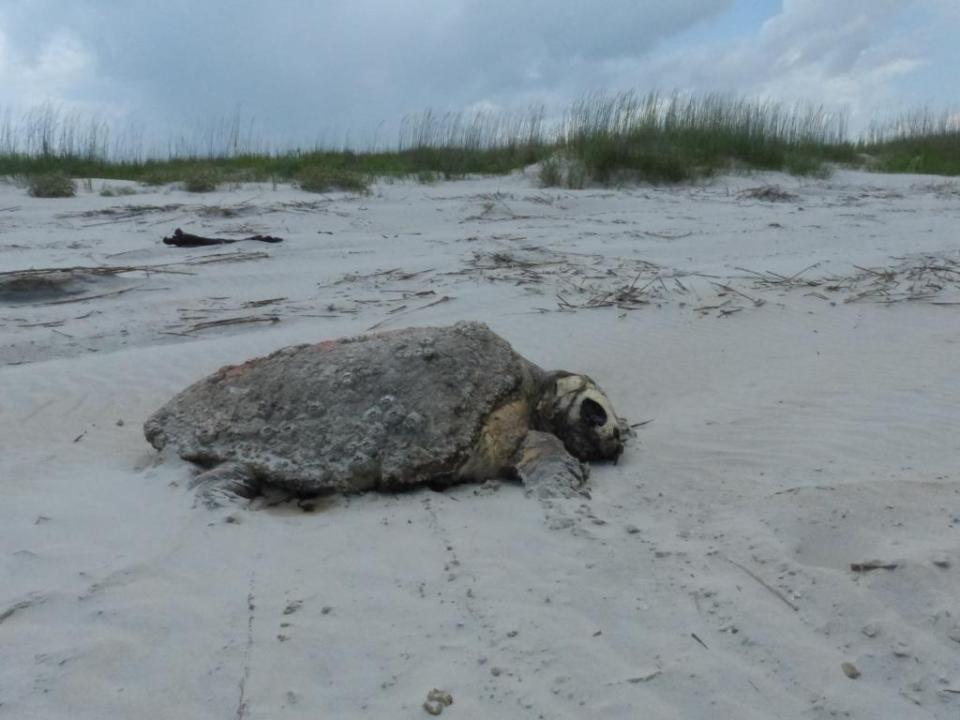
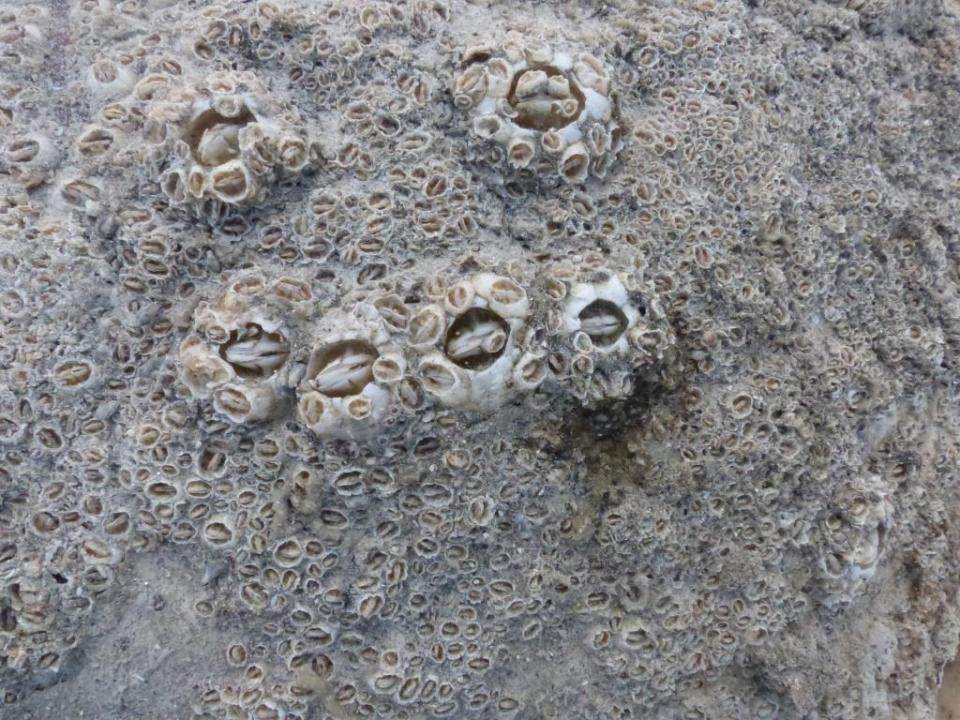 The vet gave the carcass a check with the pit-tag scanner to make sure that this turtle had not been previously tagged by turtle biologists. No signal.
The vet gave the carcass a check with the pit-tag scanner to make sure that this turtle had not been previously tagged by turtle biologists. No signal.
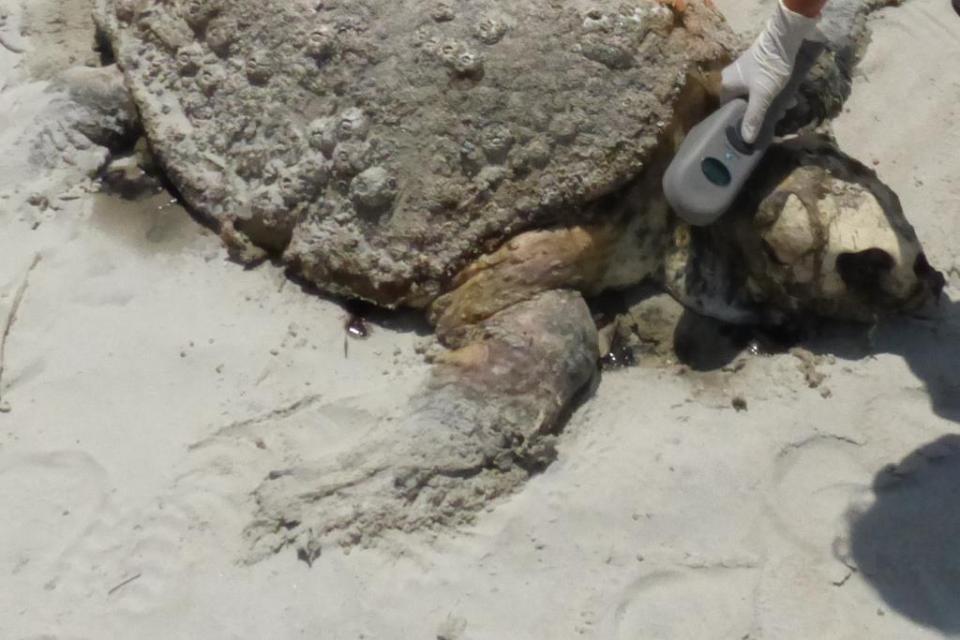 The esophagus, covered in downward-pointing rubbery fingers. Loggerhead turtles swallow crabs, then grip them in their throats as they expel excess water.
The esophagus, covered in downward-pointing rubbery fingers. Loggerhead turtles swallow crabs, then grip them in their throats as they expel excess water.
 There were no fish hooks or plastic debris in the gut, only remains of crustacea. A horseshoe crab leg from the large intestine:
There were no fish hooks or plastic debris in the gut, only remains of crustacea. A horseshoe crab leg from the large intestine:
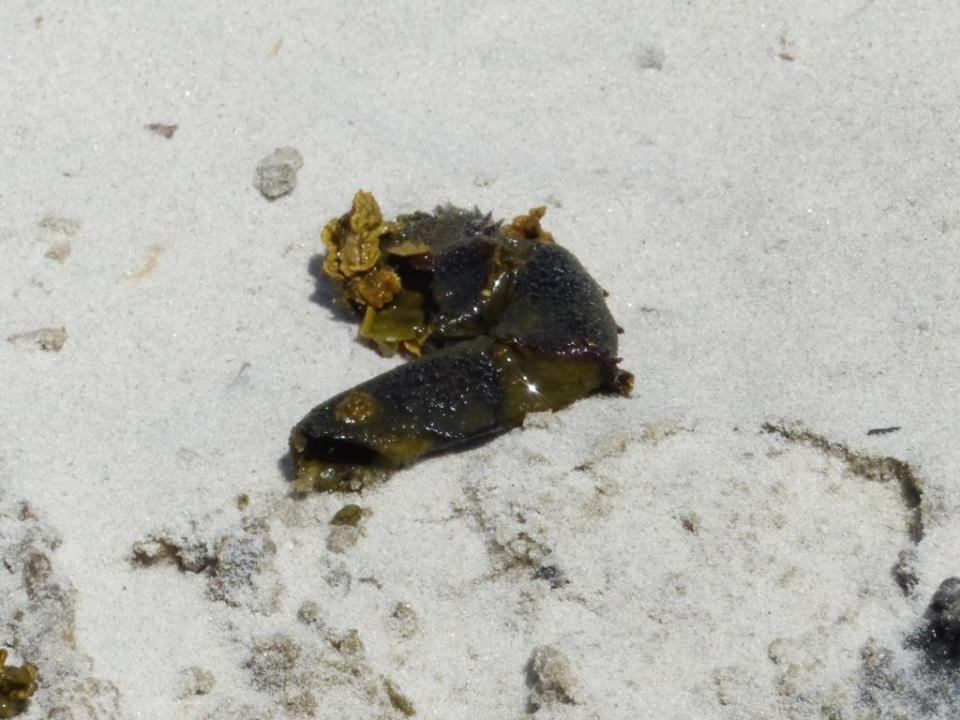 Microbial decomposition was well-advanced (stand upwind…), but the “turtle soup” (as the vet called it) revealed no obvious cause of death.
Microbial decomposition was well-advanced (stand upwind…), but the “turtle soup” (as the vet called it) revealed no obvious cause of death.
 The turtle was likely born on this beach or one closeby. She traveled the Atlantic gyre as a youngster, then wandered the ocean for at least thirty years, perhaps as many as sixty. To misquote the Bard, food for vultures, brave turtle: Fare thee well, great heart.
The turtle was likely born on this beach or one closeby. She traveled the Atlantic gyre as a youngster, then wandered the ocean for at least thirty years, perhaps as many as sixty. To misquote the Bard, food for vultures, brave turtle: Fare thee well, great heart.
They have their exits and their entrances, And one turtle in her time plays many parts… an exit, yes, but also many entrances:
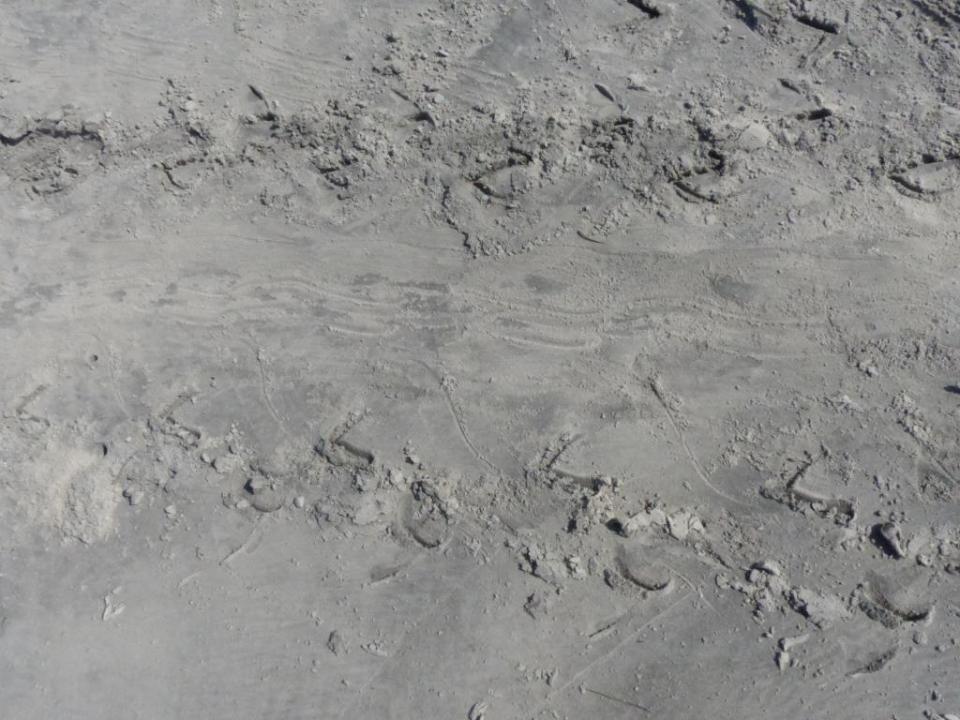 …the crawlway of a sister or cousin of the deceased, oaring up the beach to dig a nest. She chose a poor spot, one that would get flooded, so the St Catherines Island Sea Turtle Program relocated the nest to a safer place. One of the traveling eggs:
…the crawlway of a sister or cousin of the deceased, oaring up the beach to dig a nest. She chose a poor spot, one that would get flooded, so the St Catherines Island Sea Turtle Program relocated the nest to a safer place. One of the traveling eggs:
 Hopefully the egg, and its one hundred siblings, will hatch and then swim out to the Atlantic gyre in mid-August.
Hopefully the egg, and its one hundred siblings, will hatch and then swim out to the Atlantic gyre in mid-August.
Here is a fabulous figure from a recent article by Katherine Mansfield and her colleagues on satellite-tracked loggerhead turtle hatchlings (source: Mansfield, K. L., Wyneken, J., Porter, W. P., & Luo, J. (2014). First satellite tracks of neonate sea turtles redefine the ‘lost years’ oceanic niche. Proceedings of the Royal Society of London B: Biological Sciences, 281(1781), 20133039.). The upper map is colored by depth, the bottom one by water temperature. Lines show the paths of individual hatchlings.

Wonderful creatures!!
I remember flagging down two strong
Men in a car to help me save a large
Large snapping turtle crossing a highway
I the Upper Peninsula of Michigan!
It was something to see this man carry
The turtle by its tail to safety!!!!
Fountainpen
Wow — they must have been strong and had quick hands to handle a big snapping turtle. I used to carry a snow shovel in the car for just this purpose!
oh how i miss the days on st cats and ossabaw. hope you are having/had a wonderful trip!
i even miss the necropsies…always have liked dissections
a friend of mine from grad school just laid eyes on a leatherback on tybee!!
Ha! Missing necropsies is a sure sign that you are permanently infected with the biology virus. Incurable, I’m afraid.
Only a handful of leatherbacks on St C over many decades. Would be great to see one!
https://en.wikipedia.org/wiki/Minn_of_the_Mississippi Meant as a children’s book but so much more, I highly recommend this “story book” about a freshwater turtle. The story follows Minn, a snapping turtle, on her life journey from the source of the Mississippi river to the Gulf of Mexico. The book is packed with information about “chelydra serpentina” , the river , the people along the river (mound builders, early explorers, 20th century commerce, etc.) , other animals, maps, all beautifully illustrated. It is a great book to use to show children or anyone for that matter what it takes for the animals around us to survive. It’s just a very special book!
It looks fabulous, thank you.
Thanks! That was educational. The esophagus was rococo… not sure about how its structure relates to the crabs that the turtles eat, but would probably need a diagram to understand that.